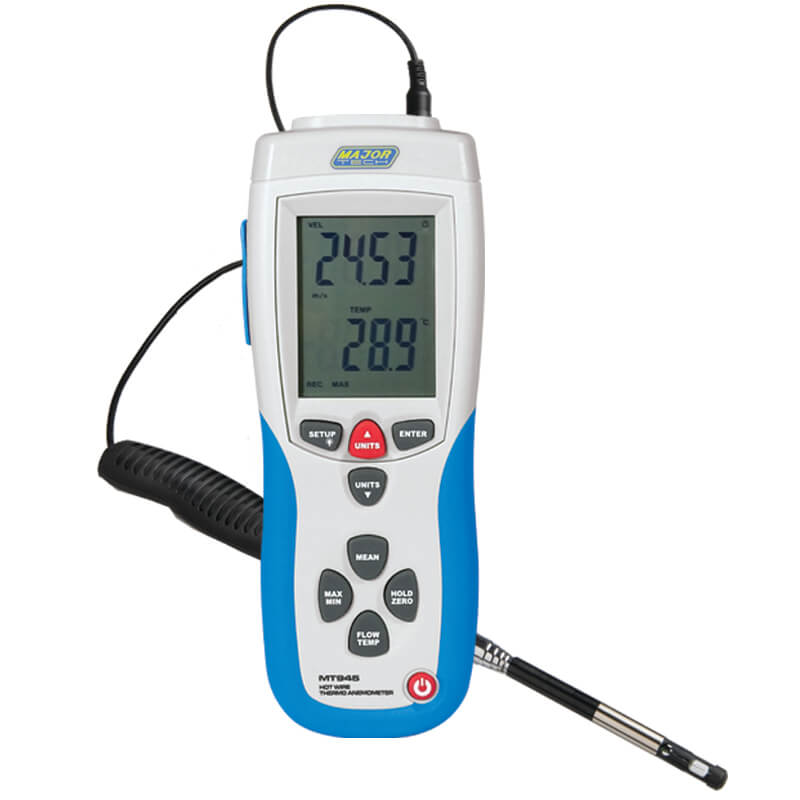All You Required to Find Out About Anemometers: Just How They Function, Why They Matter, and Where to Make use of Them
Anemometers, though typically forgotten in the world of clinical tools, play a critical duty in numerous fields, using valuable understandings right into wind speed and air movement patterns. As we dig into the intricacies of anemometer technology, we will certainly discover the inner functions of these devices, their relevance, and the vital considerations when selecting the ideal anemometer for specific applications.

Anemometer Essentials
An important instrument made use of to gauge wind rate and direction, the anemometer plays a critical duty in weather forecasting and different industries. An anemometer normally contains 3 or 4 mugs that rotate in the wind, a vane that directs into the wind, and sensing units to track the rotations or movements. By calculating the rotations or motions over a certain period, the anemometer can identify wind speed. The vane assists figure out wind instructions by directing into the wind, supplying beneficial information for climate projecting, aviation, maritime procedures, environmental tracking, and wind energy applications.
There are different kinds of anemometers offered, consisting of mug anemometers, vane anemometers, hot-wire anemometers, and sonic anemometers, each with its distinct functions and applications. Cup anemometers are commonly made use of for basic wind speed dimensions, while vane anemometers are chosen for directional dimensions. Hot-wire anemometers appropriate for low airspeeds, and sonic anemometers are ideal for high-precision measurements in research study and commercial settings. Recognizing the essentials of anemometers is necessary for exact wind data collection and analysis across different fields.
Principles of Anemometer Procedure
Building on the fundamental understanding of anemometer fundamentals, the concepts of anemometer procedure elucidate the mechanics behind wind speed and direction measurements. Cup anemometers, for instance, have 3 or more cups that record the wind, causing them to rotate much faster as the wind speed boosts. Hot-wire anemometers count on a heated wire that cools down as wind passes over it, with the price of cooling down identifying the wind rate.
Relevance of Anemometers
The value of anemometers in meteorology and various markets can not be overstated. Anemometers play a vital duty in determining wind speed and instructions, providing essential information for weather condition projecting, climate studies, ecological monitoring, and air travel procedures. Meteorologists depend on anemometers to collect exact wind data, helping them comprehend weather patterns, anticipate tornados, and concern prompt warnings to the public. In visit here industries such as building, agriculture, sustainable energy, and maritime operations, anemometers are made use of to maximize procedures, make certain safety, and boost effectiveness. For instance, wind ranch drivers use anemometers to examine wind problems and maximize electrical power production from wind generators. In the maritime industry, anemometers help ship navigation by providing real-time wind details to captains, aiding them make notified choices to ensure secure voyages. Generally, anemometers are indispensable tools that add significantly to safety and security, effectiveness, and educated decision-making in weather forecasting and a vast array of sectors.
Applications Throughout Numerous Industries
In the sustainable power sector, anemometers play an important function in examining wind conditions for wind farm placements, making certain optimum energy production. Industries like building and construction and mining utilize anemometers to monitor wind rates, crucial for security protocols, especially when functioning at elevations or in open-pit mines where strong winds can present threats. In agriculture, anemometers assist farmers in managing crop splashing by providing real-time information on wind rate to prevent drift.

Choosing the Right Anemometer for Your Requirements
Choosing the suitable anemometer customized to your particular demands is necessary for acquiring precise wind speed and direction measurements. When picking an anemometer, think about variables such as the desired application, needed measurement variety, environmental problems, and desired attributes. For general functions, a cup anemometer appropriates for determining wind rate, while a vane anemometer provides wind direction information. Hot-wire anemometers are excellent for low airspeed dimensions, and ultrasonic anemometers use high precision and resilience.

Verdict
In verdict, anemometers play an essential duty in determining wind speed and direction throughout different sectors. It is vital to take into consideration the importance of anemometers in order to make educated decisions when selecting the most ideal tool for determining wind problems.
There are different types of anemometers available, including mug anemometers, vane anemometers, hot-wire anemometers, and sonic anemometers, each with its unique attributes and applications. Cup anemometers are frequently made use of for basic wind rate measurements, while vane anemometers are favored for directional measurements. Hot-wire anemometers are appropriate for reduced airspeeds, and sonic anemometers are suitable for high-precision dimensions in research and commercial settings.Building on the foundational understanding of anemometer essentials, the principles of anemometer redirected here procedure elucidate the auto mechanics behind wind rate and instructions measurements. For basic purposes, a cup anemometer is suitable for determining wind rate, while a vane anemometer gives wind direction data.